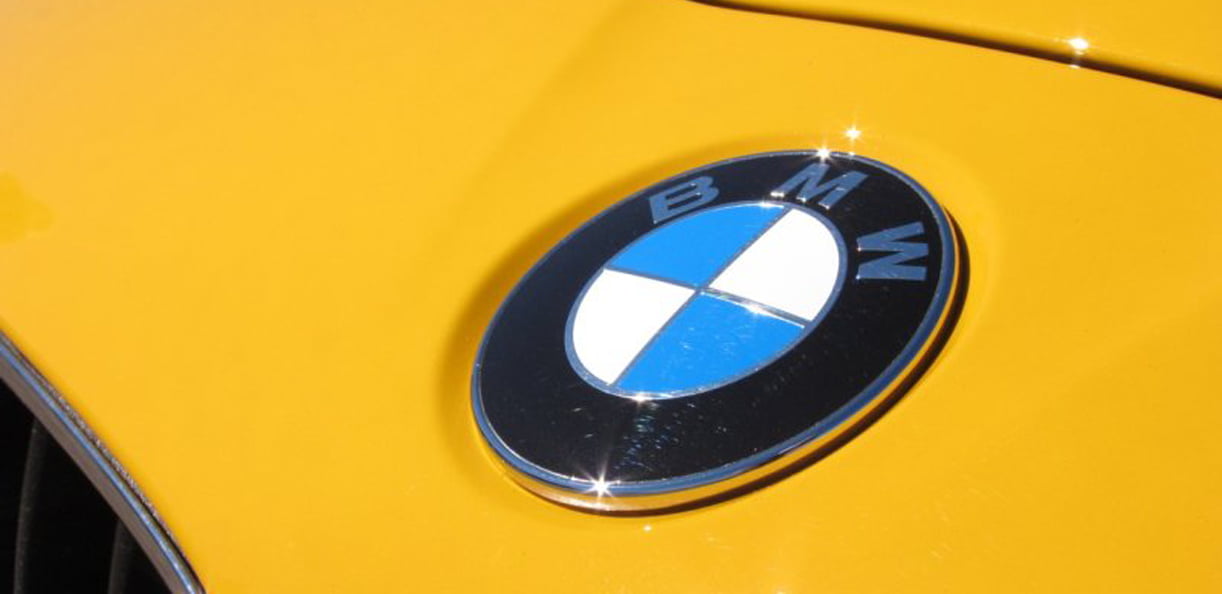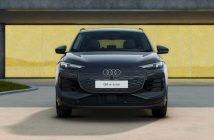+++ AUDI ’s RS 3 really only has one rival in the newly-coined hyper hatch genre: the Mercedes-AMG A 45 S. Just as Mercedes reveals the facelifted version of its car, Audi has unveiled an even quicker version of its RS 3, aptly named the ‘performance edition’. Only 300 units of the limited edition RS 3 will be available, so rarity is assured. Excitement is also assured. The standard RS 3 is one of my favorite hot hatches thanks to its characterful turbocharged, 5-cylinder engine, clever 4-wheeldrive system and general sophisticated nature. The RS 3 performance edition doesn’t tweak the formula too much. The 2.5-litre, 5-pot still lurks beneath the bonnet, but power is amped up from 400 hp to 407 hp. Torque remains at 500 Nm, but Audi says the way the performance edition delivers its power has been changed. While the 0-100 kph stays the same at 3.8 seconds, the top speed rises to 300 kph. The power delivery occurs slightly later in the rev range and the torque is set across a wider band thanks to a more pressurised turbocharger setting. As before, this power goes through a seven-speed dual-clutch transmission to all 4 wheels. The performance edition will also produce more noise. The standard exhaust system gets a modified silencer and the exhaust flap has been adapted to open further, which Audi says “makes the sound even more present”. Alongside the powertrain tweaks, Audi has also looked at sharpening the chassis of the RS 3 performance edition. As standard it features the RS Sport Suspension with adaptive damping. There’s also an RS Torque Splitter, which is designed to increase stability in low traction environments by distributing power to the rear axle (up to 50 percent). Pirelli P Zero Trofeo R semi slick tires are also standard on the performance edition. Visual tweaks come in the form of exclusive 19-inch alloy wheels, finished in dark grey matte paint. The six-piston ceramic brakes available on the standard RS 3 sit behind the front wheels. The Audi badge on the grille, RS logos dotted around the car and the exhaust tips are all painted black. The headlights on the normal RS 3 can display ‘RS 3’ or chequered flag, on the performance edition it shows ‘300’ in relation to the number built. The puddle lights have also changed to project ‘RS performance’. Optional on the regular RS 3 model, bucket seats are standard on the performance edition. There are also blue accents positioned around the interior with an extra ‘RS’ logo on the seats and floor mats. Limited to just 300 units, Audi has priced the RS 3 performance edition at about €105.000 for the Sportback model and €107.000 for the Limousine. Deliveries will begin from early 2023. +++
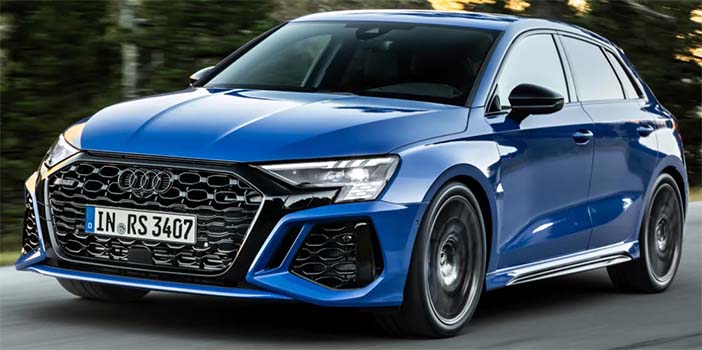
+++ If I asked you what was holding you back from making the shift to electric, chances are I’d get all sorts of answers, with a lot of purists saying that electric vehicles don’t provide the same feel and character as a good old internal combustion engine. While I definitely agree with that (I really love my internal combustion cars) I’m starting to come to terms with the reality that EVs will be a big part of the future of mobility. This brings me back to my first question, but this time framed from a practicality standpoint. Chances are, factors like range anxiety, inefficient BATTERIES , and long charging times will come into play. Having said that, technology surrounding batteries is accelerating at a blistering pace, with a lot of that tech taking place in colleges and universities focusing on the development of future tech. For example, in Pennsylvania State University in the US, scientists have been pushing the envelope of battery technology for several years now, and it seems like they’ve achieved a breakthrough recently: how does a 10 minute charging time sound? The development comes from a team of engineers led by Chao-Yang Wang who have made some significant strides in recent years. In 2016, the team developed a self-regulating temperature system to address the issue of lithium batteries’ poor performance in cold climates. This is based on a nickel foil that quickly heats the battery up in extremely cold conditions, allowing it to continue operating properly. The scientists used this method in 2019 to charge a lithium battery prototype at high temperatures, which would typically cause it to deteriorate. This time, the battery was heated up quickly (in only 30 seconds) by the use of a thin nickel foil through which electrons pass before being immediately cooled down again. This was done in a method that didn’t cause the battery to deteriorate while enabling it to benefit from the quicker charging provided by high temperatures. According to this study, an electric vehicle battery may be fully charged in under 10 minutes, giving it a range of 300–500 km. In a recently released study, the scientists who have been working on this technology have paired a new prototype battery’s quick charge time with increased energy density. The nickel-foil heating element is once again used to facilitate quicker charging times, and the most recent version has an energy density of 265 Wh/kg, an improvement over the 209 Wh/kg of the previous iteration. According to the scientists, this energy density and quick charge time are a record-breaking combination which may present some intriguing design opportunities for electric vehicles. According to the researchers, this equates to around 800.000 km driven through fast charging as the batteries can be charged to 70 percent in just 11 minutes, for a total of 2.000 cycles. Needless to say, this new battery technology will pave the way for less expensive, more compact, and energy-dense battery packs that can be rapidly recharged to keep electric vehicles on the road for longer. Of course, with this technology being in the development stage, we’ll have to wait maybe a few more years before we start seeing it roll out in commercial vehicles. Furthermore, the next hurdle for the mainstream adoption of this tech would be the development of infrastructure to provide easy access to this technology. +++
+++ The list of new cars offered with a manual transmission gets shorter every year. Sure, dual clutch automatics shift quicker, but there are roller coasters that stretch your face while accelerating and reach triple digits speeds. Few would argue, though, that they provide the same sensation and satisfaction as expertly wielding a machine such as an automobile yourself. The head honcho of BMW ’s M performance division, Frank van Meel, seems to agree. Van Meel assured fans that even though it’s a dying breed, the stick will stick around. At least until 2030. “The manual is, unfortunately, not so widespread anymore. It’s more in the segments of the M2 and M3 and the M4. And for those cars, we continue offering the manual, and those cars will run for a long time until the end of this decade”, he said. However, even within the company they’ve had to fight for it. The M division’s vice president of Customer, Brand and Sales, Timo Resch, revealed that BMW’s engineers were puzzled as to why they should make one, citing that the automatics were faster. Resch replied, “We said that’s what our customers asked for. And we really actively listened to our customers, to our fan base. The fans asked for it. They got it”. It seems fanboys’ internet cries have been heard after all. “We have customers putting up petitions online and voting and pretty much asking for us to keep the manual”, Resch said. After 2030, well, things seem a bit bleaker for standard gearboxes. The recently released M2 will be the last un-electrified M car, yet Van Meel does not believe in hybrids for smaller cars. That likely means the next M2 will be all-electric. And unless BMW’s planning some kind of EV manual like Toyota is supposedly working on, it won’t have a manual gearbox. Of course, a lot of things can change in the next 8 years. The calculus for keeping manuals around can completely change if advocates within the organization suddenly move positions or change companies. For now, though, van Meel and Resch still believe that a brand that bills itself as the ultimate driving machine needs a stick. +++
+++ If you’re reading this, there’s a good chance you know that CADILLAC ’s slogan once upon a time was “Standard of the World”. And you probably also know that the brand has struggled living up to that famous title, despite many attempts at it. The brand is going after it once again, perhaps more earnestly than ever with the Celestiq. The simple fact is that if you were to build a Cadillac for the 21st century that would truly rival the world’s greatest luxury brands with cutting-edge technology and an eye on styling of the past, present and future, you’d probably end up with something not far off from Celestiq. The proportions of the Celestiq will grab you every single time. It’s roughly 6 meter long, slightly longer than the regular Cadillac Escalade. But the roof is lower than that of the CT5. It has a remarkably long nose, particularly for an EV. And then the midsection is, well, also really long. And that trails off into a long tail that seems almost cantilevered off the rear wheels. The shape is a bit familiar, since the Lyriq already launched with very similar lines. According to Cadillac, though, the Celestiq was penned first, and it initially was planned to launch first. But higher-ups determined that they needed a more mass-market EV sooner, and they were able to push up the Lyriq. Despite the familiarity, it’s still gorgeous. The body is smooth and clean, which is countered by nifty detailing in the aluminum grille panel, the futuristic fin-style taillights with Cadillac badge etchings and real aluminum exterior trim. The rear is most striking with the sweptback roof and long overhang combine to give it a beautiful boat tail. The whole thing also sits on enormous 23-inch forged wheels, the same size as those on the almost identical-looking concept. Underneath that body, much of which is made from carbon fiber and composite panels, is some nifty technology, particularly in regards to manufacturing. The chassis is based on Ultium electric car tech, but the Celestiq’s version is very much its own, not shared with other GM products. The lower sections are made of six giant aluminum castings, the molds of which were created with 3D-printed components. There are also components, particularly for brackets and some other smaller, under-the-skin parts, built with something GM calls “Flex Fab”. The company has a machine at a facility up in Michigan that can take flat sheet metal and bend it, fold it, cut it and pierce it to create a part, without having to create special stampings or other machinery. There are 3D-printed aluminum parts in the interior such as the decorations on the steering wheel and even the seatbelt guide loop. That interior is another real showstopper. It’s quite minimalist in design, and maximalist with screens. A pair of screens measuring 55 inches across both make up the instrument, infotainment and passenger entertainment displays. They have a pixel density on par with an 8K TV. And the passenger side features a screen blocker that activates to block the image from the driver when the car is in motion and the passenger is watching something on it. In the center stack, there’s an 11 inch touchscreen for handling some infotainment features, and there’s a crystal control knob below that for additional functions. In the back, passengers each get a 12.6 inch entertainment screen, and an 8-inch control touchscreen sits between them. The technology goes beyond just screens. All four seats get the same level of adjustments, and comfort features including heating, cooling and ventilation. They all even get air vents just behind the neck for warming or cooling and heated armrests. And, naturally, with that level of adjustment, there’s individual climate settings for each position. The roof features “Suspended Particle Device” technology so that the tint level can be raised or lowered. It can range from 1%, which is virtually opaque, to 20%, which is comparable to most sunroof tints. It also has ambient lighting and decorative patterns based on the Cadillac crest. The interior also features a 38 speaker AKG sound system. There are even 3 more speakers on the outside broadcasting a unique safety noise tailored to the Celestiq. Similar to the outside, the inside is covered in high-end materials with leather on almost every surface. If it looks like metal, it’s metal. If it looks like carbon fiber, it’s carbon fiber. But it doesn’t have to be, say, carbon fiber. Celestiq buyers will get a purchase experience like that from Rolls-Royce or Bentley, where they will have the ability to choose virtually any color or material they want, anywhere in the car, as long as they’re willing to pay for it. Cadillac is happy to do special color matching or even incorporate personal items into the interior. An ultra-luxury car deserves high-end mechanical parts, too. The Celestiq will be equipped with a pair of motors sending 600 horsepower and 850 Nm of torque to all 4 wheels. Cadillac estimates the Celestiq will be able to hit 100 kph in 3.9 seconds. Electricity is supplied via a 111 kWh battery pack. That pack is an Ultium unit, but the cells in the packs have been laid flat instead of vertical. This was done to help get the low-profile body. It supports DC fast charging and has a solid peak of 200 kW, but that’s still lower than what’s possible in Hyundai and Kia products with the E-GMP underpinnings. Arguably as exciting as any of the powertrain goodies are the suspension and steering components. The Celestiq has five-link independent suspension front and rear backed by air springs and magnetorheological shocks. It’s further enhanced by Cadillac’s first implementation of active anti-roll bars. And to manage the car’s prodigious length, it has four-wheel steering (no, it doesn’t have Crab Walk). On the topic of steering, the Celestiq gets the same electric power steering used on the Cadillac Blackwings, just tuned for Celestiq. Considering how much we love those cars and basically every magnetic suspension to roll out of GM, we have a feeling the Celestiq will be a pretty magical drive. There is technology for people who don’t necessarily enjoy driving as much, too. The Celestiq features a robust suite of sensors that are supposed to be sufficient for GM’s promised Ultra Cruise. Ultra Cruise is said to be a start-to-finish, hands-free, supervised driving function. It will not be ready at launch. Cadillac says it will eventually come via over-the-air updates. I expect it will be able to do everything that Super Cruise does now, so hands-off supervised highway driving, and Cadillac said it will gradually add additional capability as it becomes available. The details on this rollout were very slim, so we’re thinking that full Ultra Cruise functionality is not coming anytime soon. But, hey, Super Cruise is still impressive. And while it’s not quite self-driving, Cadillac did also mention that the car will be able to self-park with the driver out of the car. That could be particularly helpful considering how huge the car is. Prospective buyers will need to be prepared to pay plenty. Cadillac confirmed the base price will start above $300.000. And of course, the more the car is customized, the more expensive it will be. Production of the car begins in December next year. Each car will be built at the GM Technical Center in Michigan. They will feature significant hand-assembly, and the company won’t be rushing production. Cadillac representatives said that, once production is fully under way, they’ll be able to complete about 2 cars per day. And like almost everything else, customers will be able to customize the delivery experience to be wherever they want. +++
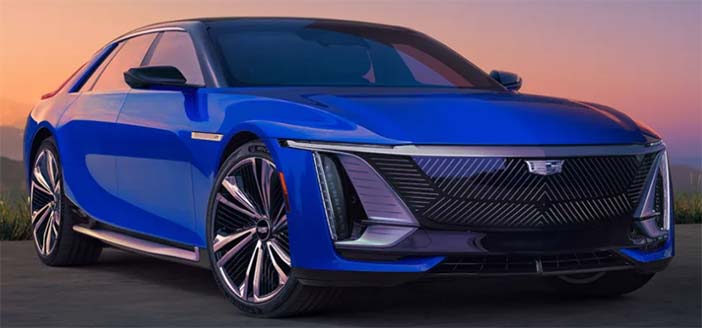
+++ It has been over a decade since DONKERVOORT first announced the D8 GTO line. Throughout those years, the Dutch carmaker didn’t hint at any replacement for the lightweight supercar… until recently. In a teaser published on Donkervoort’s website and various social media channels, a new model is coming and it will be named the F22. Probably named after the famous stealth Lockheed Martin F-22 Raptor fighter jet, the teaser comes with a caption that says “You’ll never see it coming. It will be worth the weight”. There isn’t any confirmed information about the model just yet, except for the name and the logo shown in the teaser. However, the curious play on the phrase “worth the weight” could provide some clues about the new model. Donkervoort has been known to make ultra-lightweight, hand-built supercars; a fact that gave the company its critical acclaim. With the wordplay above, we can deduce that the new model will be heavier than the current D8 GTO. If you’re a fan of the Dutch brand, this isn’t good news but we all know that additional kilograms can be offset by adding power, which is expected on the new model. For reference: the D8 GTO Individual comes with an Audi-sourced 2.5-litre inline-5 turbocharged engine that makes over 400 hp. The supercar can sprint to 100 km per hour in just 2.7 seconds. Will the Donkervoort F22 live up to the acclaim of the model it will replace? And more importantly, will the Dutch company abandon its minimalist Lotus Super 7-inspired design and release a car that takes after the F-22 stealth fighter jet? We’ll know in the months to come so for now, all we can do is weight. +++
+++ Pedestrian fatalities, unresolved safety issues, overachieving plus overweight trucks (overweight electric trucks) and divisive attitudes about vehicles equipped as is the new HUMMER EV, are very much on the mind of Robinson Meyer. Mr. Meyer, who suggests that the 1.000 horsepower pickup is a cross “between an ambulance and a race car”, is a staff writer for The Atlantic, a well-respected, long-lived journal founded in 1857. His recent essay in the monthly’s flagship magazine starts off describing a scary video clip posted online by Edward Barseghian that features the 4.000 kilo Hummer hurtling full tilt towards 3 lanes of cars idling at a light (the driver stops it in time). Then he goes on to pretty much berate the machine. “The Hummer EV haters and lovers had discovered one of the most important facts about electric ‘super trucks’: they are very heavy and they go very fast”, he writes. “If you imagine an ambulance that can accelerate as fast as a Formula 1 car, you’re imagining a vehicle only slightly more unwieldy than the new Hummer”. Meyer goes on to discuss the issue of allowing battery powered vehicles that weigh as much as the Hummer does onto public roads. “The weight of EVs is a safety issue that drivers (and cyclists and pedestrians) will only have to keep worrying about as these cars go mainstream”, he explains. “Suffice it to say that cars as huge as the Hummer EV need to face some kind of regulation, especially in cities and towns, where they pose a distinct threat to the public”. To Hummer devotees, them’s fightin’ words. But Meyer takes pains to present a sort of response from Anthony Schiavo, a research director at Lux Research, a global advisory firm: Why is the Hummer so heavy if its batteries weigh only about 1.350 kilos? “It’s absolutely a design choice and a marketing choice”, Schiavo answers. “People like larger vehicles, and the reason why those larger vehicles are getting made is because they sell”. The author concludes by bringing into his thesis the issues of climate change, liberal and conservative politics. In some places, his arguments wander; they become muddled. But for those enthused about electrics and big trucks, “Frankenstein’s Hummer” is worth a read. +++
+++ The rising cost of developing electrified cars is partly responsible for diminished manufacturer attendance at MOTOR SHOWS, according to Stellantis boss Carlos Tavares. He was speaking behind the scenes of a sparsely attended Paris motor show, at which the mainstream manufacturers represented with large-scale stands included his own company’s DS, Jeep and Peugeot brands, the Renault Group and incumbent Chinese firms BYD and Great Wall. “The fact that you have Renault, Stellantis and the Chinese only is reflective of the fact that the car makers are now much more picky on the return on investment [ROI] which is represented by shows”, he said. “The costs of shows have been reduced dramatically. At the Detroit motor show a few weeks ago, all the cars were at ground level: no more big, big constructions. So the costs have gone down. Previously they weren’t reasonable, and now the car makers are looking at the return on investment. And why? Because the costs of electrification is going through the roof, so you have to save a lot of money in a lot of different places to fund electrification. So yes, people start to be very demanding on return on investment, that’s normal”. Paris is just the second full-scale motor show to take place in Europe following the pandemic, after Munich in 2021 which was similarly downscaled, compared with previous years. Geneva, traditionally the continent’s biggest motoring event, hasn’t taken place since 2019. Tavares explained Stellantis’s thinking on motor shows: “In our case, we have a floor, and if you’re below that floor in terms of ROI, you don’t go, depending on the cost of the motor show. And we only go if we have something to say. The presence at motor shows isn’t given. It depends on if it makes business sense and the conditions under which you can go. If you’re in a part of the world where people don’t like cars, you may have questions about the sustainability of the event. Nothing lasts forever, and the changes you see demonstrate that people aren’t quite making those decisions, and you can estimate that this will continue to be the norm for the next few years”. +++
+++ Stellantis boss Carlos Tavares (photo) forecasts that the SEMICONDUCTOR CRISIS and wider supply-chain issues, that have throttled the car industry for 2 years, will be over by the end of 2023. Rounding off a busy day for Stellantis at the Paris motor show (at which Tavares presented the new Jeep Avenger and Peugeot 408, called for import tariffs on Chinese EVs in Europe and slammed the impending Euro-7 emissions legislation as “useless”), he said there’s cause for optimism in terms of the company ramping back up to pre-crisis production levels. “The situation is getting better”, he said, suggesting that a long period of uncertainty and instability caused by the unavailability of the crucial processing components is soon to end. “We have a limited number of suppliers who are troublemakers (let’s say 2 or 3) and we’re trying to push those suppliers to improve”. He added that the agitators in question are European but stopping short of naming them, emphasizing that the situation is improving and that he expects that trend to continue. “By the end of 2023, the problem will be over. That’s what we estimate, given the current rate of improvement. It depends a lot on the demand of the market, but that’s our estimation. This is where, normally, things will be marginally a problem, but so far we’re still improving”. There is still a “significant number” of plant shutdowns occurring on a monthly basis, specifically in Europe, Tavares said, and shortages are still a problem for the industry. “I think we still have to manage it for the end of 2022 and throughout 2023”, he said. Stellantis posted record net revenues of €88 billion in the first half of 2022, despite the shortages and despite a significant 18% drop in European deliveries, having boosted sales of electric vehicles by nearly 50% year on year. +++
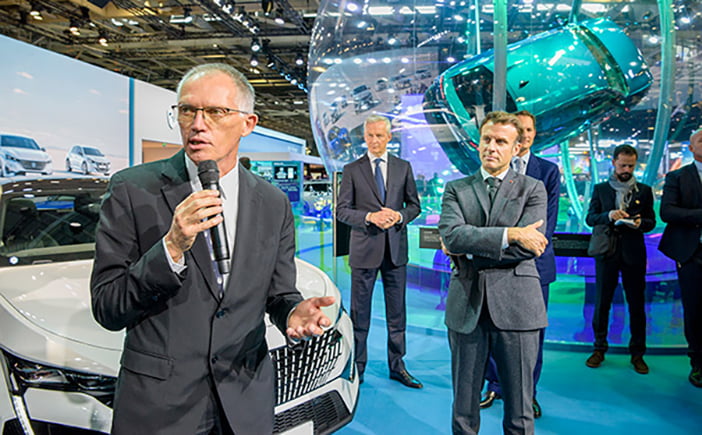
+++ Tucked away in a presentation made by VOLKSWAGEN Commercial Vehicles for investors are teasers depicting future derivatives of the ID.Buzz. The most exciting of the bunch would have to be the one showing a steering wheel with red accents and a ‘GTX’ badge on the bottom spoke. The suffix is already being used on spicy versions of the ID.4 and ID.5 electric SUVs. In the ID.4 GTX and ID.5 GTX, the dual electric motors provide the SUVs with all-wheel drive and a combined output of 299 hp and 460 Nm. It’s too soon to say whether the ID. Buzz GTX will offer an identical output, but I wouldn’t be surprised. VW has already promised to give all EVs the GTX treatment, and that’ll include an ID.3 GTX hot hatch. In another slideshow, VW Commercial Vehicles shows the roomier long-wheelbase model. As a refresher, it will be the only body style to be sold in the United States as the standard-wheelbase and cargo models currently available in Europe will remain forbidden fruits. You can easily see the location of the rear wheels as these end in just about the same spot where the regular ID. Buzz’s body ends. As a side note, the LWB model is set to receive a bigger 111 kWh battery pack. This stretched ID.Buzz also happens to have all-wheel drive, meaning there’s one electric motor at the front and another at the rear. It would seem VW’s commercial arm intends to sell the AWD equipped ID.Buzz without the GTX badge. That makes sense taking into account that the ID.4 GTX available on the Old Continent has a direct correspondent in the US known simply as the ID.4 AWD. A third slideshow depicts the 7-seat configuration, which will be the standard layout in the US. We might be mistaken, but the ID.Buzz teased above appears to have the regular wheelbase. If my assumption is correct, what that means is VW Commercial Vehicles intends to sell the electric MPV with 7 seats and the shorter body in Europe and possibly other markets outside of North America. Expect these new ID.Buzz variants to arrive in the next couple of years. The US-bound model is scheduled to go on sale in 2024. +++



